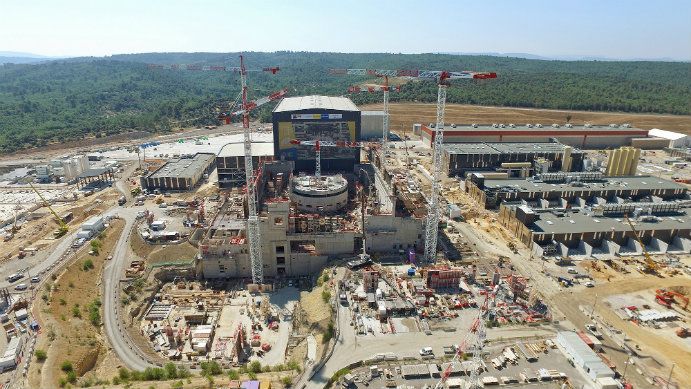The International Thermonuclear Experimental Reactor (ITER) is a nuclear fusion tokamak being built in Southern France as the result of an unprecedented cooperative effort by governments around the world. It is a global collaboration that aims “to build the world's largest tokamak, a magnetic fusion device that has been designed to prove the feasibility of fusion as a large-scale and carbon-free source of energy based on the same principle that powers our Sun and stars.” The ITER Project is a collaboration of 35 nations, led by ITER members: China, the European Union, India, Japan, Korea, Russia and the United States.
Eugenio Schuster, professor of mechanical engineering and mechanics, who is currently serving as Leader of the Operations and Control Topical Group within the U.S. Burning Plasma Organization (BPO), was recently named to the prestigious ITER Scientist Fellows Network designed to strengthen the involvement of the fusion community as ITER prepares for its operational phase. The ITER Scientist Fellows Network members work closely with each other and ITER to address key research and development issues.
The U.S. Department of Energy also named Schuster as a member of ITER’s Integrated Operation Scenarios Topical Group within ITPA: International Tokamak Physics Activity (ITPA). The scope of the Integrated Operation Scenarios Topical Group is to contribute to establishing operational scenarios in burning plasma experiments, particularly candidate scenarios in ITER.
“Currently, nuclear fusion reactors do not produce energy,” says Schuster. “The experiments done on tokamaks around the world are focused on studying the physics of the plasma.”
ITER is looking to be the first tokamak to produce net energy via nuclear fusion efficiently enough for the reaction to be sustained for a long duration—and become a reliable energy source. The goal, says Schuster, is to produce ten times more energy than is injected into the tokamak.
Though researchers have been trying to realize nuclear fusion’s promise for more than sixty years, Schuster believes they might be getting much closer. ITER’s first plasma is scheduled for 2025.
“Unlike fossil fuels, nuclear fusion produces no air pollution or greenhouse gases,” says Schuster. “Unlike nuclear fission, nuclear fusion poses no risk of nuclear accident, no generation of material for nuclear weapons, and low-level radioactive waste.”
In other words, the work that Schuster and his colleagues are doing at ITER and other facilities could help bring us closer to a carbon-free, combustion-free future where the world’s energy needs are met by a near-limitless source—like the sun.
Read the full story at the Lehigh University News Center.
Story by Lori Friedman


